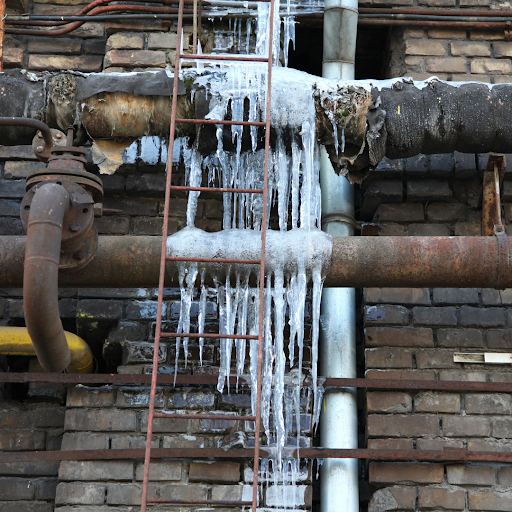Preventing Your Pipes from Cold Weather: Best Methods
Preventing Your Pipes from Cold Weather: Best Methods
Blog Article
Everybody maintains their own unique conception with regards to Winter Plumbing Precautions: Preventing Frozen Pipes.

Winter can ruin your plumbing, especially by freezing pipes. Below's exactly how to avoid it from happening and what to do if it does.
Intro
As temperature levels decrease, the threat of frozen pipes rises, potentially leading to expensive repairs and water damage. Recognizing how to stop icy pipes is vital for home owners in cold environments.
Recognizing Frozen Pipelines
What creates pipelines to ice up?
Pipes ice up when revealed to temperature levels below 32 ° F (0 ° C) for prolonged durations. As water inside the pipelines ices up, it increases, putting pressure on the pipeline wall surfaces and potentially triggering them to break.
Dangers and problems
Frozen pipes can cause supply of water interruptions, building damages, and expensive fixings. Ruptured pipelines can flood homes and cause considerable structural damage.
Indicators of Frozen Piping
Determining icy pipes early can prevent them from breaking.
Exactly how to identify frozen pipelines
Seek lowered water circulation from taps, uncommon odors or sounds from pipes, and noticeable frost on subjected pipes.
Prevention Tips
Protecting at risk pipes
Cover pipelines in insulation sleeves or utilize warm tape to secure them from freezing temperatures. Focus on pipelines in unheated or exterior areas of the home.
Heating strategies
Keep indoor areas sufficiently heated, specifically locations with pipes. Open up closet doors to permit cozy air to circulate around pipes under sinks.
Safeguarding Outside Plumbing
Garden pipes and exterior taps
Detach and drain yard tubes prior to wintertime. Mount frost-proof faucets or cover exterior taps with shielded caps.
What to Do If Your Pipes Freeze
Immediate actions to take
If you believe frozen pipes, keep taps open to soothe stress as the ice melts. Make use of a hairdryer or towels taken in hot water to thaw pipes gradually.
Long-Term Solutions
Architectural modifications
Take into consideration rerouting pipelines far from exterior wall surfaces or unheated locations. Add extra insulation to attics, basements, and crawl spaces.
Upgrading insulation
Buy premium insulation for pipelines, attic rooms, and walls. Correct insulation helps preserve regular temperatures and decreases the risk of frozen pipes.
Conclusion
Avoiding icy pipes needs positive actions and quick feedbacks. By comprehending the reasons, signs, and safety nets, property owners can shield their pipes throughout cold weather.
5 Ways to Prevent Frozen Pipes
Drain Outdoor Faucets and Disconnect Hoses
First, close the shut-off valve that controls the flow of water in the pipe to your outdoor faucet. Then, head outside to disconnect and drain your hose and open the outdoor faucet to allow the water to completely drain out of the line. Turn off the faucet when done. Finally, head back to the shut-off valve and drain the remaining water inside the pipe into a bucket or container. Additionally, if you have a home irrigation system, you should consider hiring an expert to clear the system of water each year.
Insulate Pipes
One of the best and most cost-effective methods for preventing frozen water pipes is to wrap your pipes with insulation. This is especially important for areas in your home that aren’t exposed to heat, such as an attic. We suggest using foam sleeves, which can typically be found at your local hardware store.
Keep Heat Running at 65
Your pipes are located inside your walls, and the temperature there is much colder than the rest of the house. To prevent your pipes from freezing, The Insurance Information Institute suggests that you keep your home heated to at least 65 degrees, even when traveling. You may want to invest in smart devices that can keep an eye on the temperature in your home while you’re away.
Leave Water Dripping
Moving water — even a small trickle — can prevent ice from forming inside your pipes. When freezing temps are imminent, start a drip of water from all faucets that serve exposed pipes. Leaving a few faucets running will also help relieve pressure inside the pipes and help prevent a rupture if the water inside freezes.
Open Cupboard Doors
Warm your kitchen and bathroom pipes by opening cupboards and vanities. You should also leave your interior doors ajar to help warm air circulate evenly throughout your home.

We hope you enjoyed our topic on How to prepare your home plumbing for winter weather. Thanks so much for taking a few minutes to read through our blog. Sharing is caring. You never know, you may just be helping someone out. We value reading our article about 6 Ways to Prevent Frozen Pipes.
Go Services Report this page